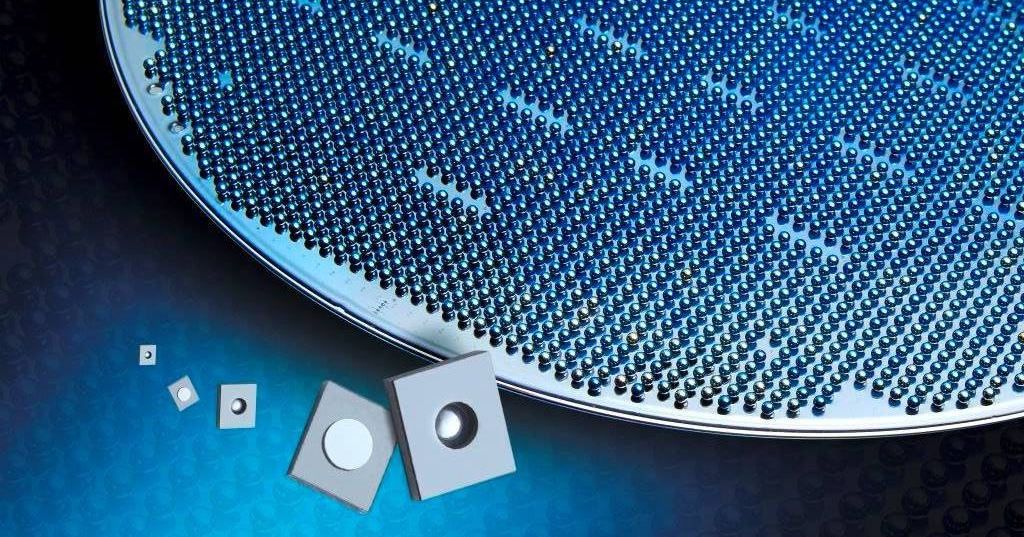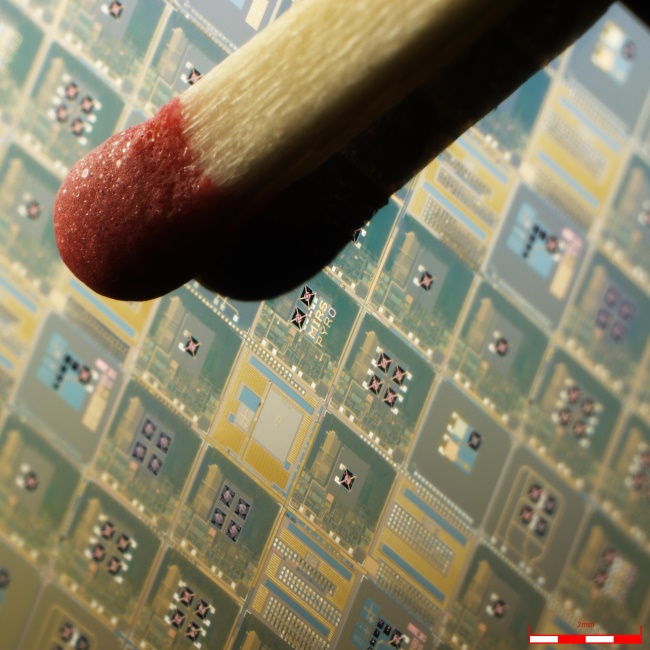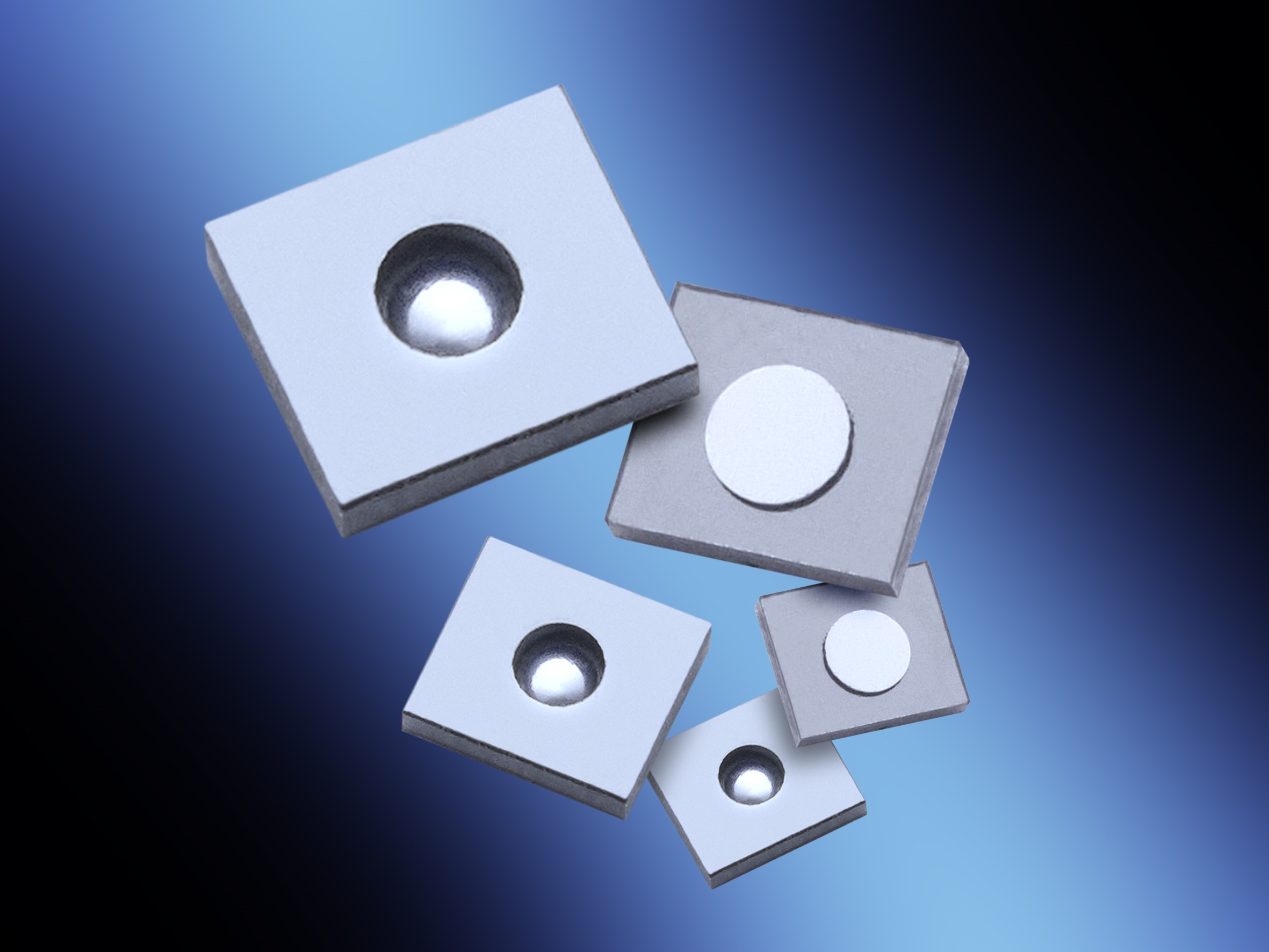Norman Laske & Amit Kulkarni
Technologies for Midget Infrared Sensor Systems
Contactless temperature measurement: Infrared heat sensors make this possible by converting the heat radiation of an object into an electrical voltage. In the BMBF-funded project "Midget Infrared Sensing Systems" (MIRS), Fraunhofer ISIT and its partners have developed new technologies that make high-quality sensor technology affordable for mass production. Fields of application are, for example, spot thermometers for measuring fever by smartphone, low-cost in-ear thermometers or sensors for personal detection.



Wafer-Level Package with IR Optics
The key to cost-effective production is complete system integration on the silicon wafer, which contains the sensor component and its electronics. Over 5000 microchips are located on a 200mm CMOS wafer. Each of these 2 mm² chips is equipped with a silicon lens at ISIT, so that the incident heat radiation is focused on the detector element. Our video film shows how we manufacture our lenses from preformed silicon spheres. As part of the wafer-level package, all 5000 lenses are precisely positioned above the sensor in one step and hermetically sealed to the chip. A suitable joining process based on aluminum and germanium was developed by ISIT in the BMBF project "WIN-IT" especially for CMOS wafers and qualified for production in MIRS by the project partner X-FAB. By using titanium as optical aperture, free gas molecules are bound. The permanently low internal pressure allows a two times higher sensitivity of the sensor.
Post-CMOS process for pyroelectric sensors
For the work in MIRS, the project coordinator Melexis provided functional CMOS wafers with thermopile sensors. In an experimental study, ISIT built a pyroelectric sensor on the existing structures in five lithography layers, which could be read out digitally via the integrated amplifier circuits. The active material was Aluminum Scandium Nitride (AlScN) , a piezoelectric material that has been qualified for use in actuators and sensors in cooperation with the ChristianAlbrechts-Universität zu Kiel (CAU) for several years. Sensor structures and material were characterized by the partner aixACCT with a specially developed and meanwhile commercialized measuring device. The pyroelectric behavior of the material could be attributed to its piezoelectric properties.
The MIRS project results contribute significantly to the industrialization of infrared heat sensor technology by the partners, but are also interesting for other applications.
This might also interest you
 Fraunhofer Institute for Silicon Technology
Fraunhofer Institute for Silicon Technology